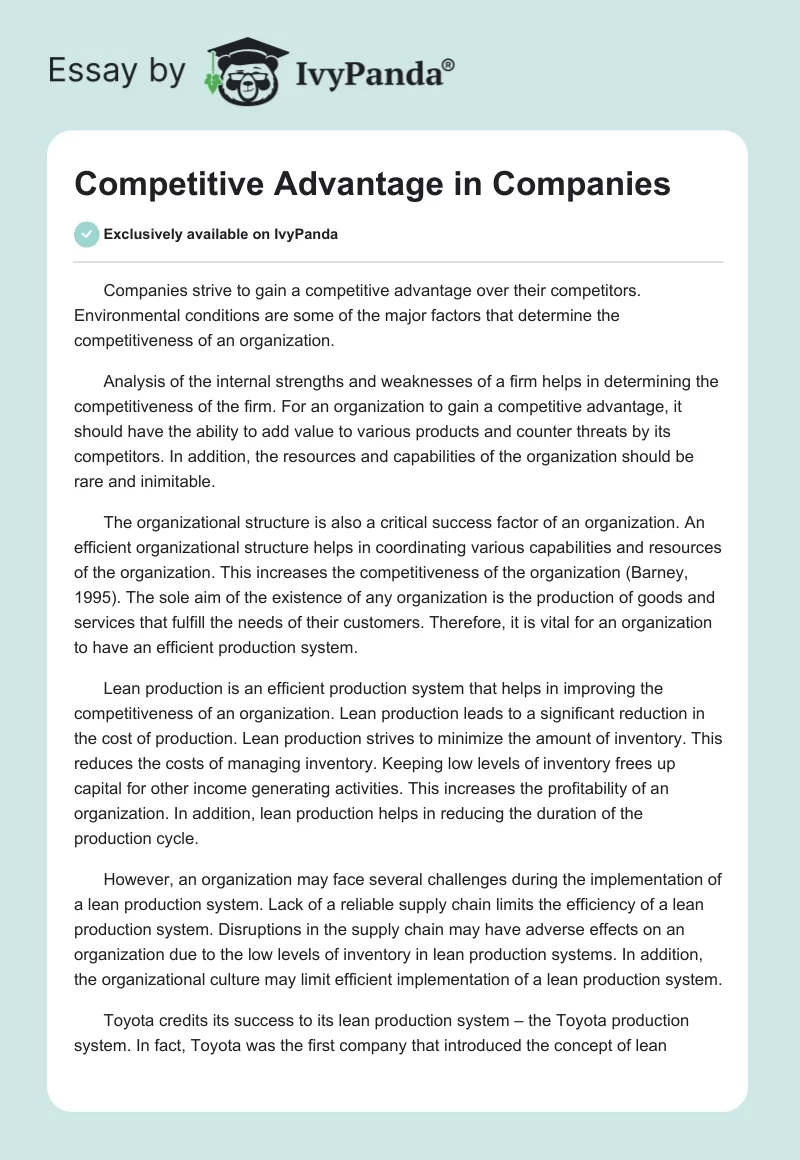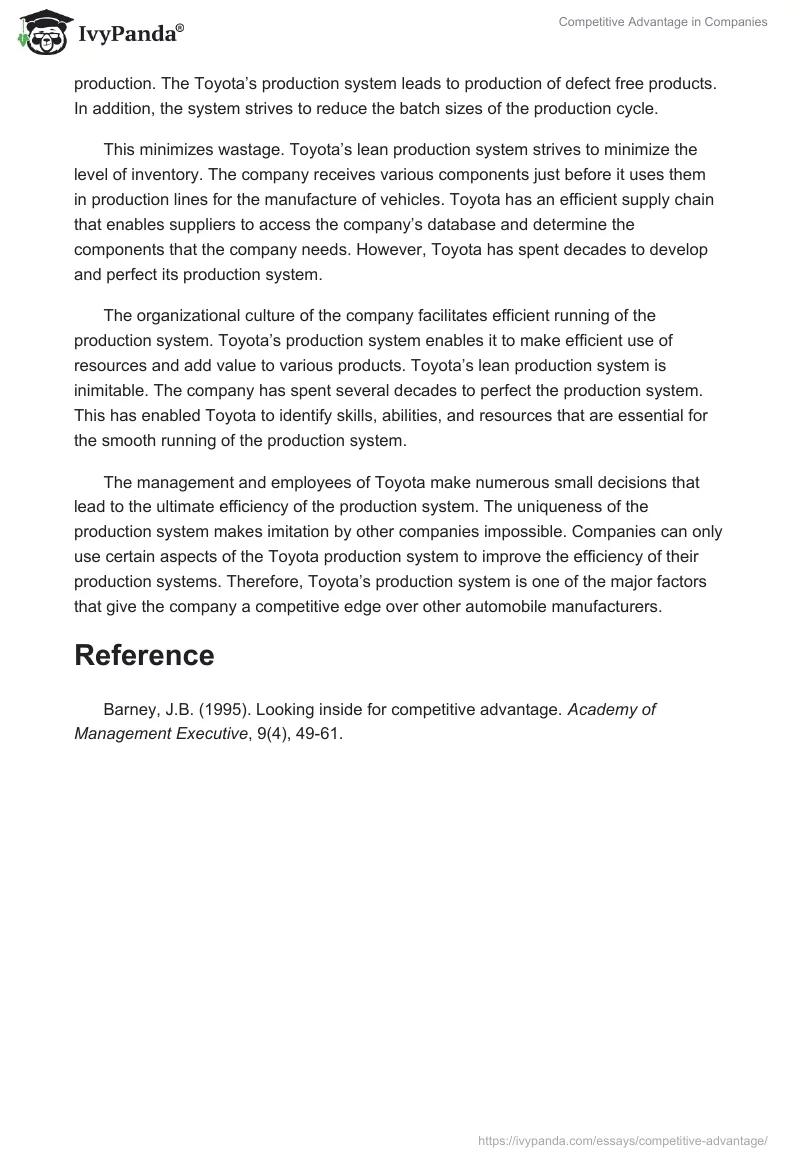Companies strive to gain a competitive advantage over their competitors. Environmental conditions are some of the major factors that determine the competitiveness of an organization.
Analysis of the internal strengths and weaknesses of a firm helps in determining the competitiveness of the firm. For an organization to gain a competitive advantage, it should have the ability to add value to various products and counter threats by its competitors. In addition, the resources and capabilities of the organization should be rare and inimitable.
The organizational structure is also a critical success factor of an organization. An efficient organizational structure helps in coordinating various capabilities and resources of the organization. This increases the competitiveness of the organization (Barney, 1995). The sole aim of the existence of any organization is the production of goods and services that fulfill the needs of their customers. Therefore, it is vital for an organization to have an efficient production system.
Lean production is an efficient production system that helps in improving the competitiveness of an organization. Lean production leads to a significant reduction in the cost of production. Lean production strives to minimize the amount of inventory. This reduces the costs of managing inventory. Keeping low levels of inventory frees up capital for other income generating activities. This increases the profitability of an organization. In addition, lean production helps in reducing the duration of the production cycle.
However, an organization may face several challenges during the implementation of a lean production system. Lack of a reliable supply chain limits the efficiency of a lean production system. Disruptions in the supply chain may have adverse effects on an organization due to the low levels of inventory in lean production systems. In addition, the organizational culture may limit efficient implementation of a lean production system.
Toyota credits its success to its lean production system – the Toyota production system. In fact, Toyota was the first company that introduced the concept of lean production. The Toyota’s production system leads to production of defect free products. In addition, the system strives to reduce the batch sizes of the production cycle.
This minimizes wastage. Toyota’s lean production system strives to minimize the level of inventory. The company receives various components just before it uses them in production lines for the manufacture of vehicles. Toyota has an efficient supply chain that enables suppliers to access the company’s database and determine the components that the company needs. However, Toyota has spent decades to develop and perfect its production system.
The organizational culture of the company facilitates efficient running of the production system. Toyota’s production system enables it to make efficient use of resources and add value to various products. Toyota’s lean production system is inimitable. The company has spent several decades to perfect the production system. This has enabled Toyota to identify skills, abilities, and resources that are essential for the smooth running of the production system.
The management and employees of Toyota make numerous small decisions that lead to the ultimate efficiency of the production system. The uniqueness of the production system makes imitation by other companies impossible. Companies can only use certain aspects of the Toyota production system to improve the efficiency of their production systems. Therefore, Toyota’s production system is one of the major factors that give the company a competitive edge over other automobile manufacturers.
Reference
Barney, J.B. (1995). Looking inside for competitive advantage. Academy of Management Executive, 9(4), 49-61.


